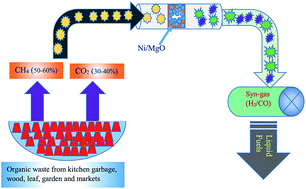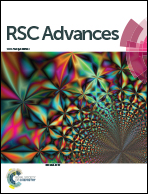An investigation on the influence of catalyst composition, calcination and reduction temperatures on Ni/MgO catalyst for dry reforming of methane
Abstract
In the present paper, the following issues regarding the dry reforming of methane, over Ni/MgO catalyst prepared by microemulsion synthesis were investigated: (i) the effect of nickel content (20, 40 and 80 wt%) in the Ni/MgO catalyst (ii) the effect of calcination temperatures (450 °C, 600 °C and 800 °C) on the solid solution formation between NiO and MgO (iii) the effect of reduction temperatures (550 °C and 800 °C) on the catalytic activity and stability of the catalyst at a very high space velocity of the reactants (CH4/CO2 = 1, GHSV = 1.68 × 105 ml h−1 g−1). Under optimum conditions, the Ni/MgO catalyst having higher Ni content (80%), calcined at higher temperature (800 °C) and reduced at lower temperature (550 °C) exhibited better catalytic activity and stability. This was attributed to the presence of higher Nio active sites, formation of a strong NiO–MgO solid solution and also the catalyst was less prone to sintering at a lower reduction temperature. Furthermore, BET analysis of the Ni/MgO catalysts indicates a decrease in surface area from 153.22 to 54.01 m2 g−1, as the Ni content was increased from 20% to 80%, respectively. Furthermore, fresh and spent catalysts were characterized by BET, XRD, TPR-H2, CO2-TPD, FESEM and TEM.


 Please wait while we load your content...
Please wait while we load your content...